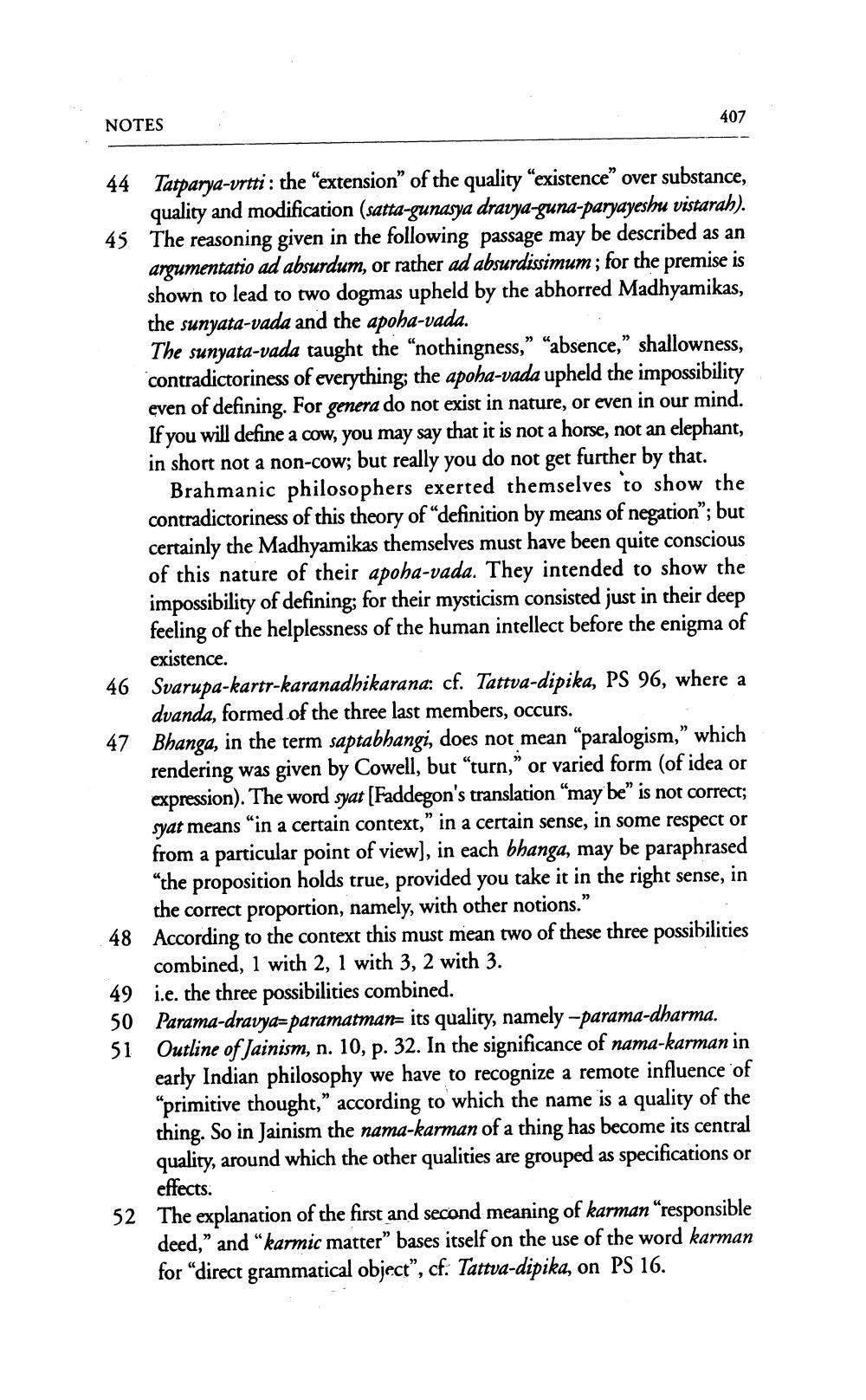________________
NOTES
407
44 Tatparya-vrtti: the "extension" of the quality "existence" over substance, quality and modification (satta-gunasya dravya-guna-paryayeshu vistarah). 45 The reasoning given in the following passage may be described as an argumentatio ad absurdum, or rather ad absurdissimum; for the premise is shown to lead to two dogmas upheld by the abhorred Madhyamikas, the sunyata-vada and the apoha-vada.
The sunyata-vada taught the "nothingness," "absence," shallowness, contradictoriness of everything; the apoha-vada upheld the impossibility even of defining. For genera do not exist in nature, or even in our mind. If you will define a cow, you may say that it is not a horse, not an elephant, in short not a non-cow; but really you do not get further by that.
Brahmanic philosophers exerted themselves to show the contradictoriness of this theory of "definition by means of negation"; but certainly the Madhyamikas themselves must have been quite conscious of this nature of their apoha-vada. They intended to show the impossibility of defining; for their mysticism consisted just in their deep feeling of the helplessness of the human intellect before the enigma of
existence.
46 Svarupa-kartr-karanadhikarana: cf. Tattva-dipika, PS 96, where a dvanda, formed of the three last members, occurs.
47 Bhanga, in the term saptabhangi, does not mean "paralogism," which rendering was given by Cowell, but "turn," or varied form (of idea or expression). The word syat [Faddegon's translation "may be" is not correct; syat means "in a certain context," in a certain sense, in some respect or from a particular point of view], in each bhanga, may be paraphrased "the proposition holds true, provided you take it in the right sense, in the correct proportion, namely, with other notions."
48 According to the context this must mean two of these three possibilities combined, 1 with 2, 1 with 3, 2 with 3.
49 i.e. the three possibilities combined.
50 Parama-dravya-paramatman- its quality, namely -parama-dharma. 51 Outline of Jainism, n. 10, p. 32. In the significance of nama-karman in early Indian philosophy we have to recognize a remote influence of "primitive thought," according to which the name is a quality of the thing. So in Jainism the nama-karman of a thing has become its central quality, around which the other qualities are grouped as specifications or effects.
52 The explanation of the first and second meaning of karman "responsible deed," and "karmic matter" bases itself on the use of the word karman for "direct grammatical object", cf. Tattva-dipika, on PS 16.




